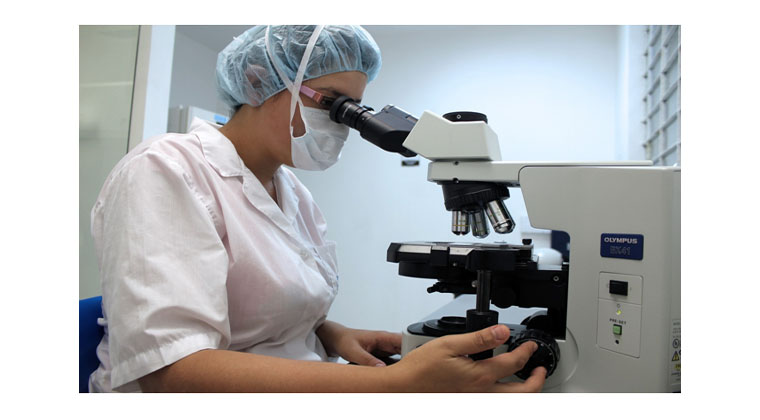
Research Peptides:What Are They?
Every single living thing contains peptides, a kind of chemical substance. Like proteins, they consist of a sequence of amino acids linked together by peptide bonds. Smaller in length (often 2–50 amino acids), peptide chains differ significantly from protein chains. However, peptides are believed to work in several ways throughout the organism, one of which is potentially regulating:
- The metabolic process
- The movement of cells
- Appetite
- Control of hormone release
- Recovery time
A peptide’s specific properties and functions are determined by the order in which its amino acid chains are organized. While most peptides have a linear structure, some may have non-linear or cyclical ones. Peptides’ versatility has made them a promising candidate for use as research agents. Synthetic peptides that act similarly to their naturally occurring relatives have been developed because of this. Some substances are either modified analogs of endogenous hormones or bioidentical to them.
Testosterone Research Peptides
Studies suggest that it may be possible to enhance testicular function and testosterone (T) levels using certain peptides, which are hypothesized to do this in several ways, including boosting testosterone production or removing obstacles. Research suggests that two peptides that may interact directly with the hypothalamic-pituitary-gonadal (HPG) axis to potentially promote testosterone production are:
Investigations purport that these peptides may stimulate the synthesis of gonadotropin-releasing hormone (GnRH) and the gonadotropins luteinizing hormone (LH) and follicle-stimulating hormone (FSH) to regulate testicular function and testosterone production. It has been theorized that the pituitary gland and the bioregulator Testagen may work together to increase the synthesis of thyroid hormone and testosterone.
In addition, peptides that may trigger pituitary growth hormone synthesis have been speculated to also trigger LH and FSH. As a result, testosterone production may rise. Excessive fatty tissues and the subsequent aromatization of testosterone into estrogen may lead to hormonal imbalances, which certain peptides have been suggested to help alleviate. The pituitary gland may respond negatively to elevated estrogen levels by lowering luteinizing hormone (LH) levels, follicle-stimulating hormone (FSH), and testosterone.
An example of a possible weight loss peptide is an incretin hormone agonist, which may aid in removing excess fat cells. It seems weight loss may be possible with the help of incretin mimetics because of their alleged appetite-suppressant effects, as suggested in various mice models. Here are a few notable examples:
Findings imply that in addition to improving testosterone production, these peptides may decrease testosterone aromatization into estrogens by reducing hunger and encouraging fat cell dissolution. It should be noted that only test models with maintained testicular function may have blood T levels increased by testosterone peptides. In addition, peptides are expected to raise T levels, but only up to the typical reference range of 300ng/dl to 1000ng/dl of total testosterone.
Direct testosterone replacement treatment (TRT) should be considered instead by researchers studying test subjects with testicular injury or who want to attain high blood T levels. Similarly, TRT may readily reach serum T levels above the physiological range, depending on the concentration.
Research Peptides and Testosterone
Studies suggest that the symptoms of low testosterone may be effectively managed with testosterone replacement, which increases androgen levels. A few of the most important properties of TRT are as follows:
- Excessive testosterone supplementation within the animal for 10 weeks at high concentrations may cause levels to rise over three times the physiological reference range, according to one research study.
- In addition to protecting skeletal musculature from muscle loss during restricted weight reduction diets, TRT has been suggested to boost metabolic rate, which may aid in fat loss as suggested in certain animal studies.
Research suggests that, in contrast, research models with maintained testicular function may have increased serum T levels within the physiological range due to peptide presentation. Peptide presentation has been theorized to have several properties over TRT, one of which is that it may not impact fertility or reduce natural T production.
Investigations purport that peptides may jump start maturation with hypothalamic diseases or to restore fertility and normal T synthesis in research subjects. Including some peptides in a post-cycle treatment (PCT) regimen is possible because they may promote the organism’s inherent testosterone production.
References
[i] Forbes J, Krishnamurthy K. Biochemistry, Peptide. [Updated 2022 Aug 29]. In: StatPearls [Internet]. Treasure Island (FL): StatPearls Publishing; 2023 Jan-. Available from: https://www.ncbi.nlm.nih.gov/books/NBK562260/
[ii] Wang, L., Wang, N., Zhang, W., Cheng, X., Yan, Z., Shao, G., Wang, X., Wang, R., & Fu, C. (2022). Therapeutic peptides: current applications and future directions. Signal transduction and targeted therapy, 7(1), 48. https://doi.org/10.1038/s41392-022-00904-4
[iii] Lee, A. C., Harris, J. L., Khanna, K. K., & Hong, J. H. (2019). A Comprehensive Review on Current Advances in Peptide Drug Development and Design. International journal of molecular sciences, 20(10), 2383. https://doi.org/10.3390/ijms20102383
[iv] George, J. T., Veldhuis, J. D., Roseweir, A. K., Newton, C. L., Faccenda, E., Millar, R. P.,& Anderson, R. A. (2011). Kisspeptin-10 is a potent stimulator of LH and increases pulse frequency in men. The Journal of clinical endocrinology and metabolism, 96(8), E1228–E1236. https://doi.org/10.1210/jc.2011-0089
[v] Zhang, L., Cai, K., Wang, Y., Ji, W., Cheng, Z., Chen, G., & Liao, Z. (2019). The Pulsatile Gonadorelin Pump Induces Earlier Spermatogenesis Than Cyclical Gonadotropin Therapy in Congenital Hypogonadotropic Hypogonadism Men. American journal of men’s health, 13(1), 1557988318818280. https://doi.org/10.1177/1557988318818280
[vi] Rossikhin, V. V., Hoshchenko, Y. O., &Osipov, P. G. (2011). EFFICACY OF TESTOSTERONE SYNTHESIS INDUCTOR APPLICATION” TESTAGEN” IN ANDROGENIC DEFICIENCY IN PATIENTS WITH CHRONIC ABACTERIAL PROSTATITIS. Problems of Endocrine Pathology, 36(2), 17-22.
[vii] Sinha, D. K., Balasubramanian, A., Tatem, A. J., Rivera-Mirabal, J., Yu, J., Kovac, J., Pastuszak, A. W., &Lipshultz, L. I. (2020). Beyond the androgen receptor: the role of growth hormone secretagogues in the modern management of body composition in hypogonadal males. Translational andrology and urology, 9(Suppl 2), S149–S159. https://doi.org/10.21037/tau.2019.11.30
[viii] Sarwer, D. B., Hanson, A. J., Voeller, J., & Steffen, K. (2018). Obesity and Sexual Functioning. Current obesity reports, 7(4), 301–307. https://doi.org/10.1007/s13679-018-0319-6











